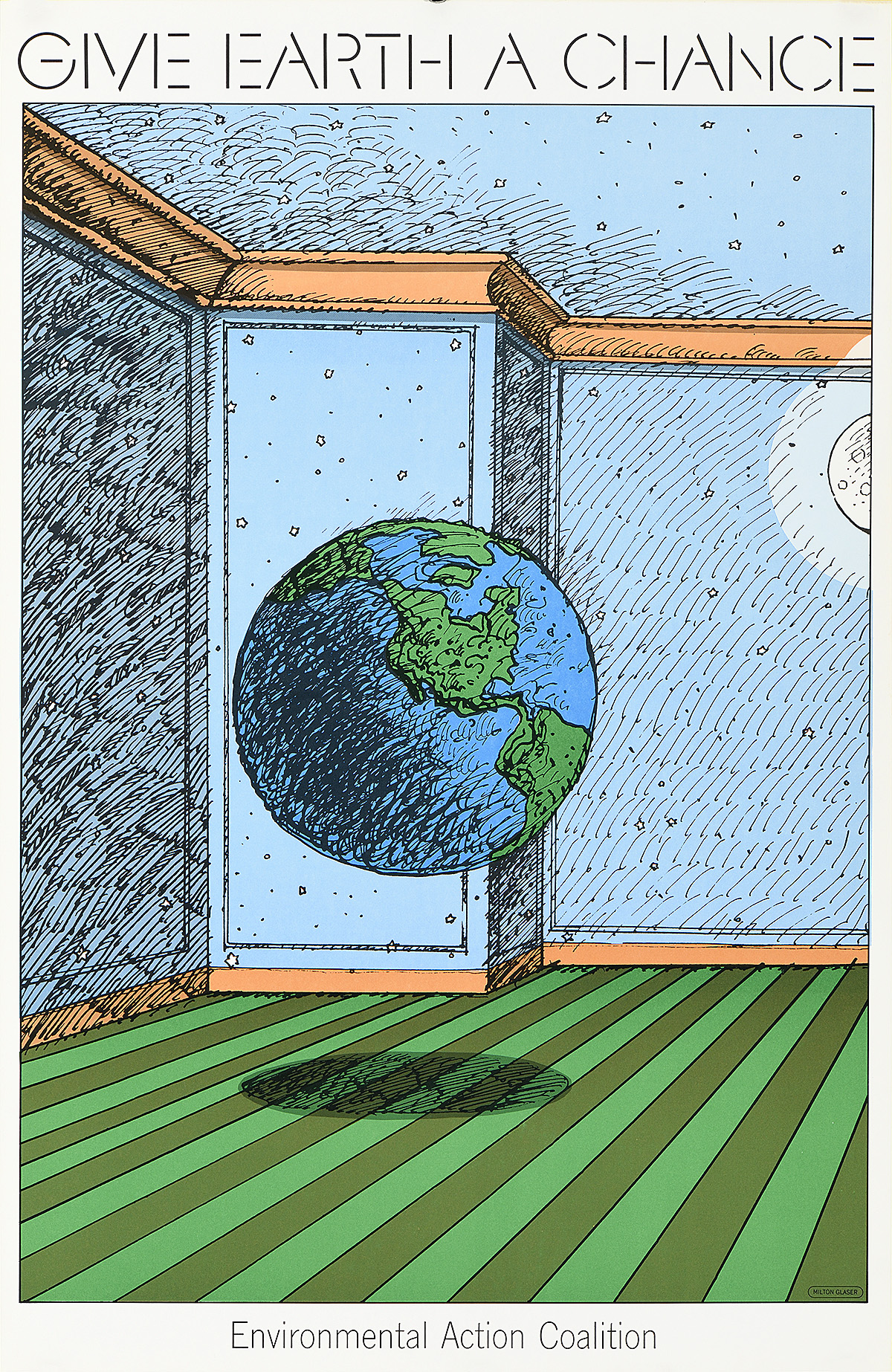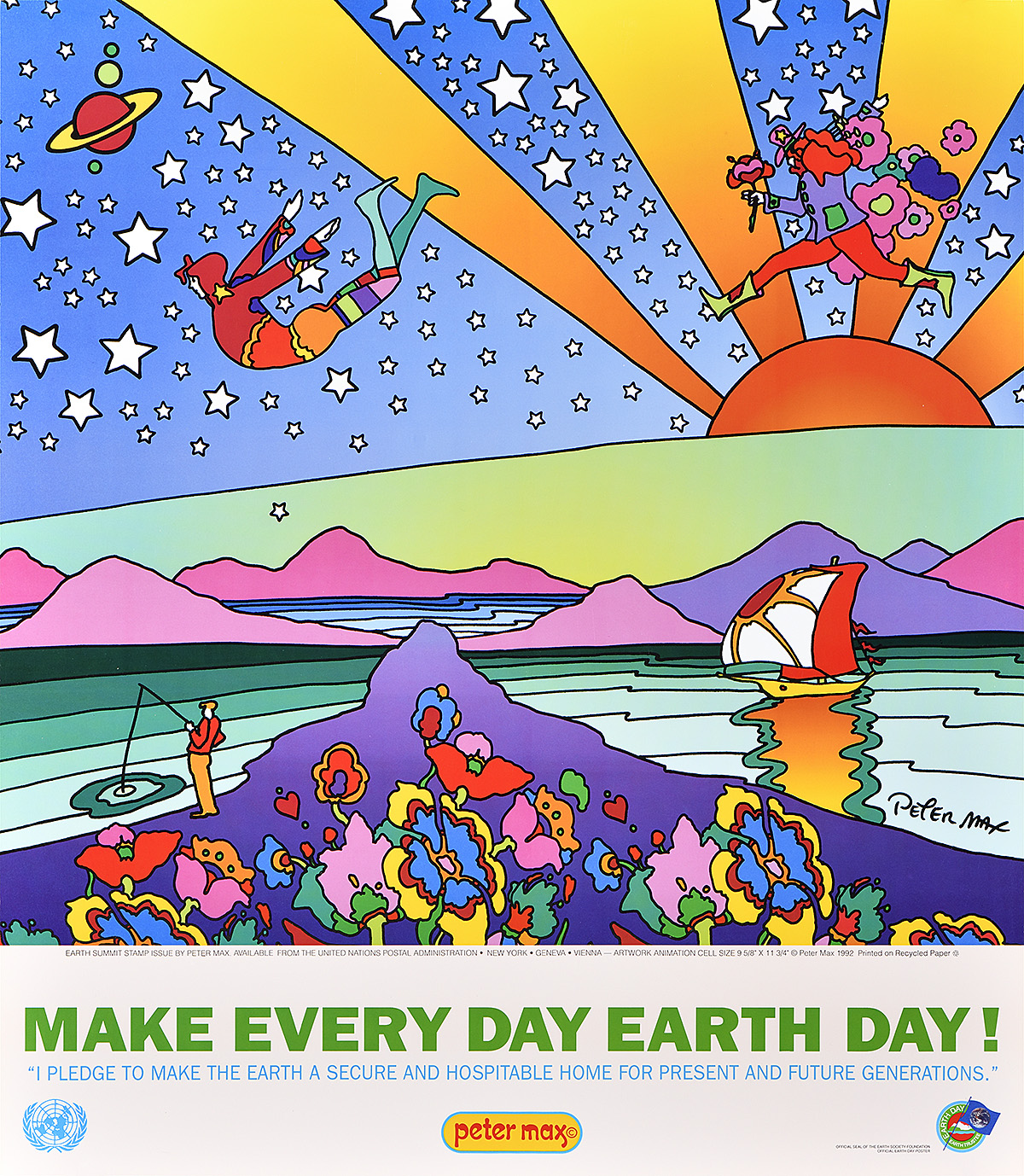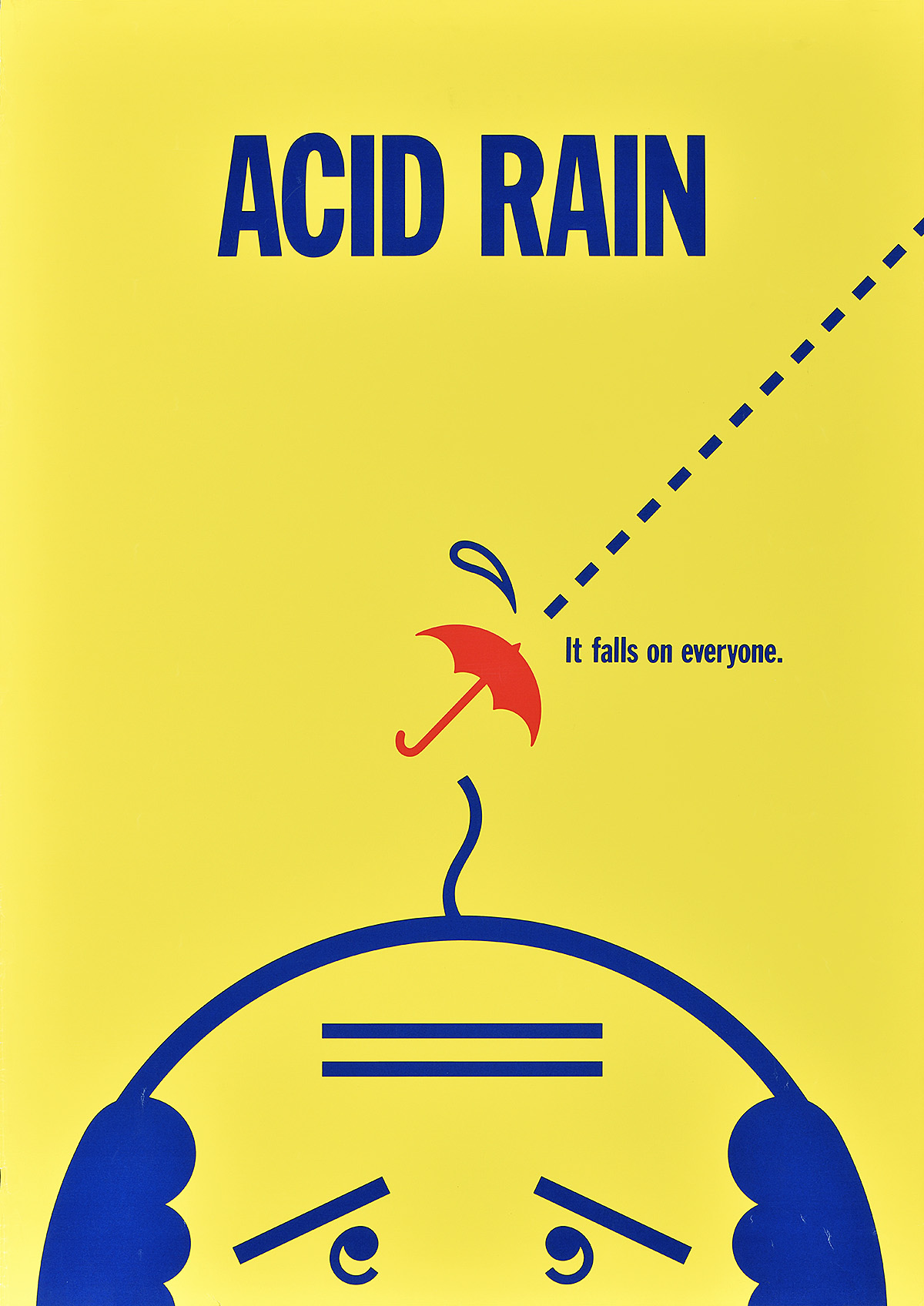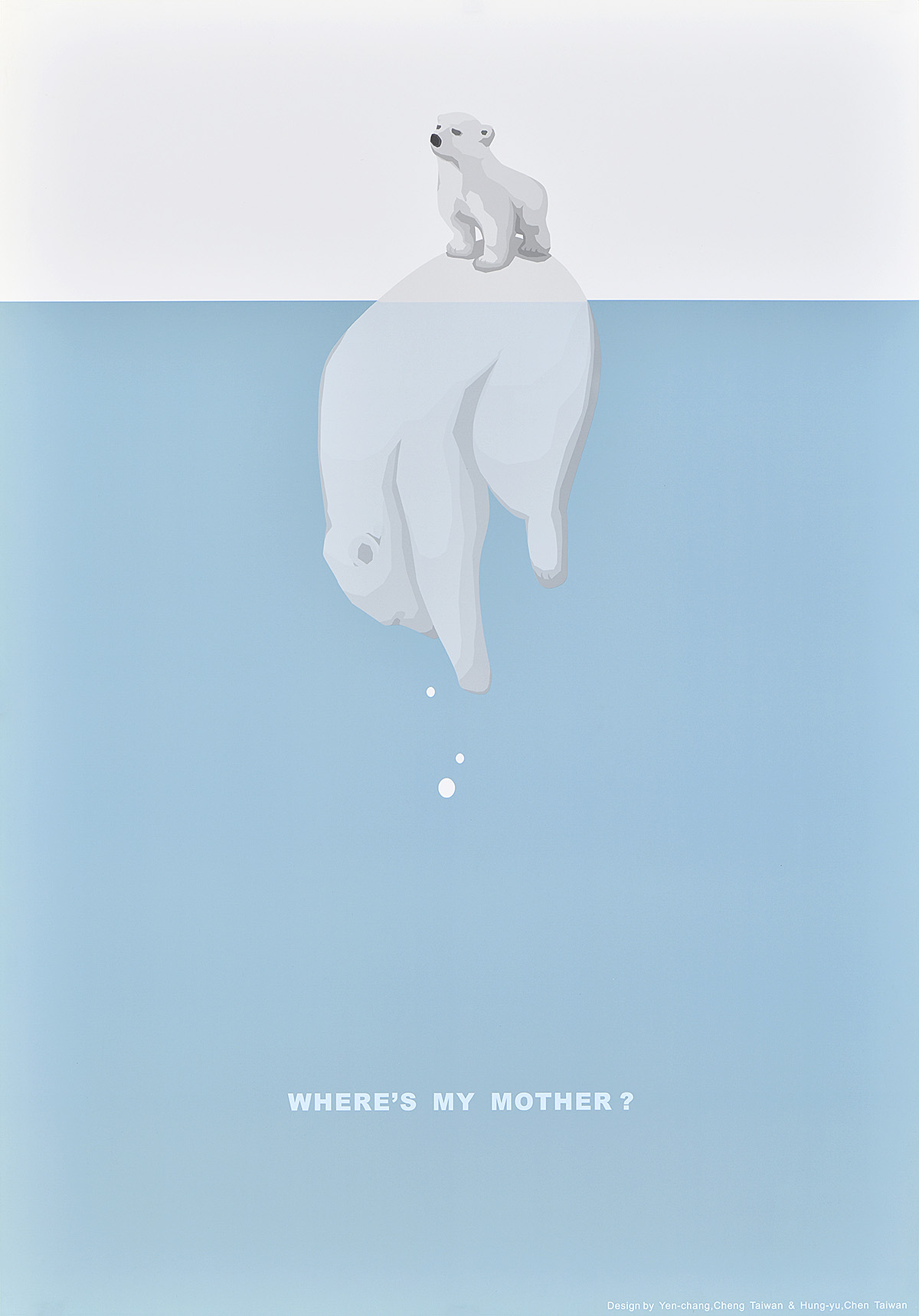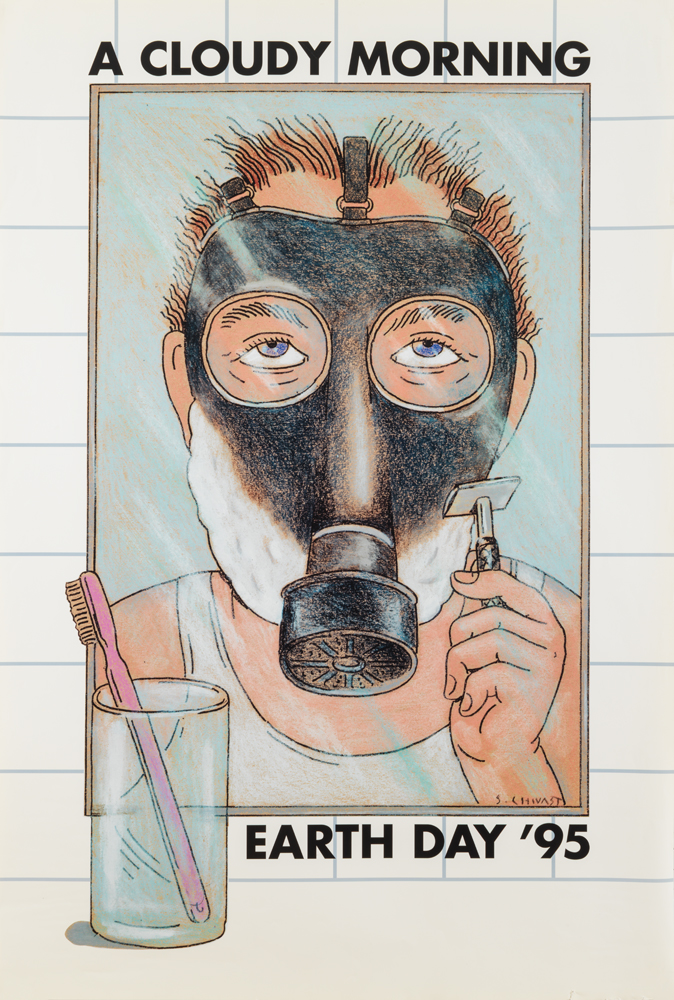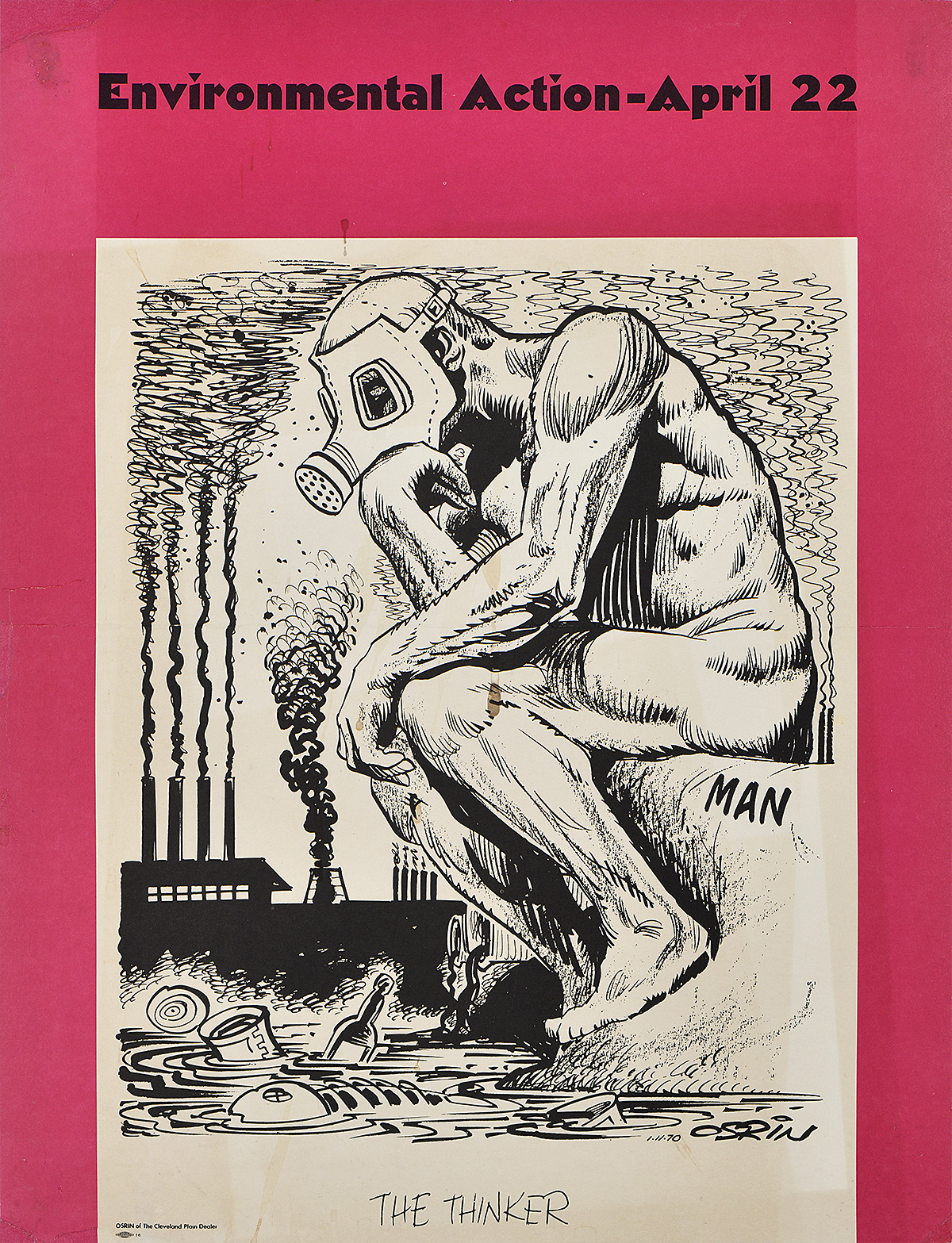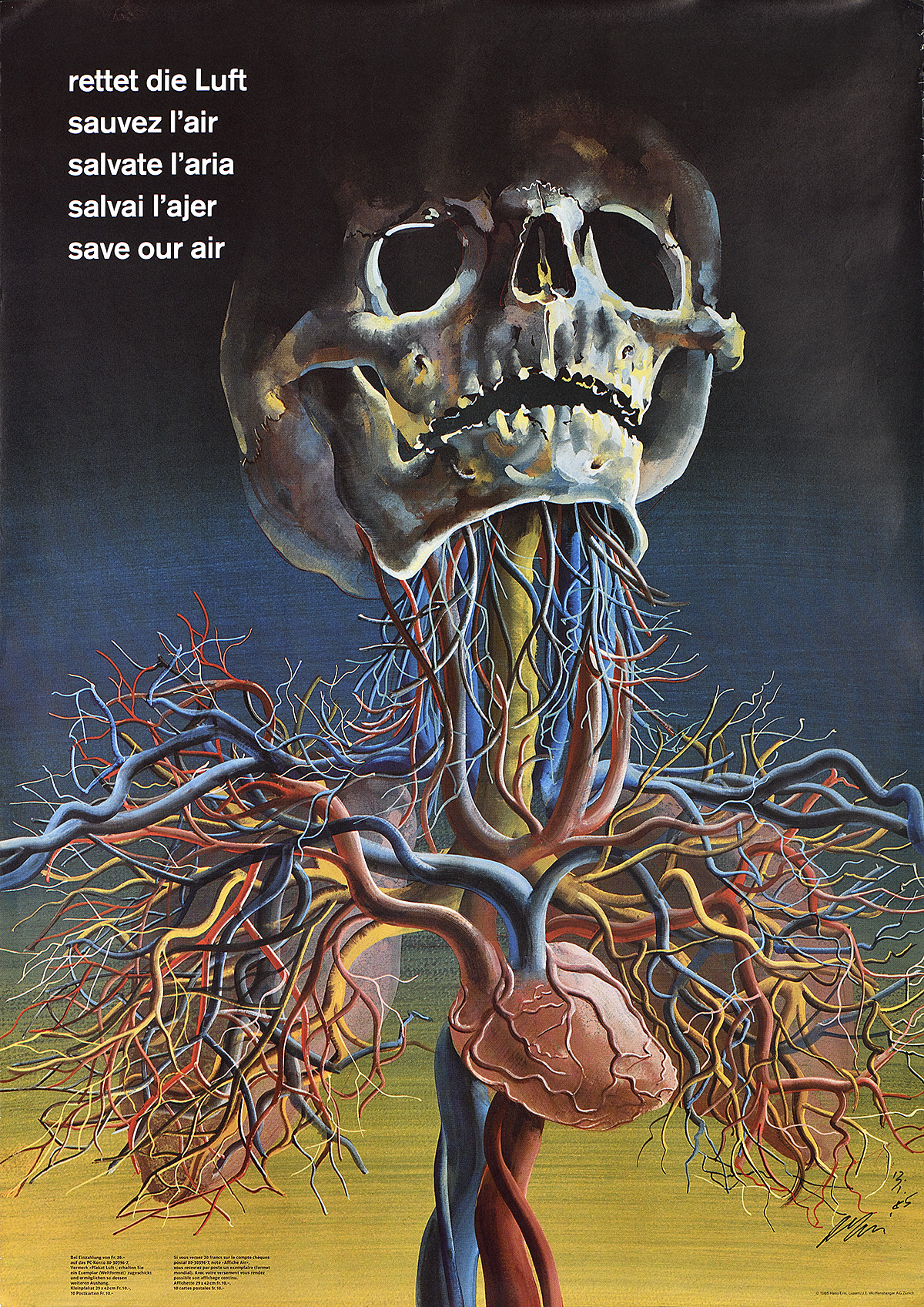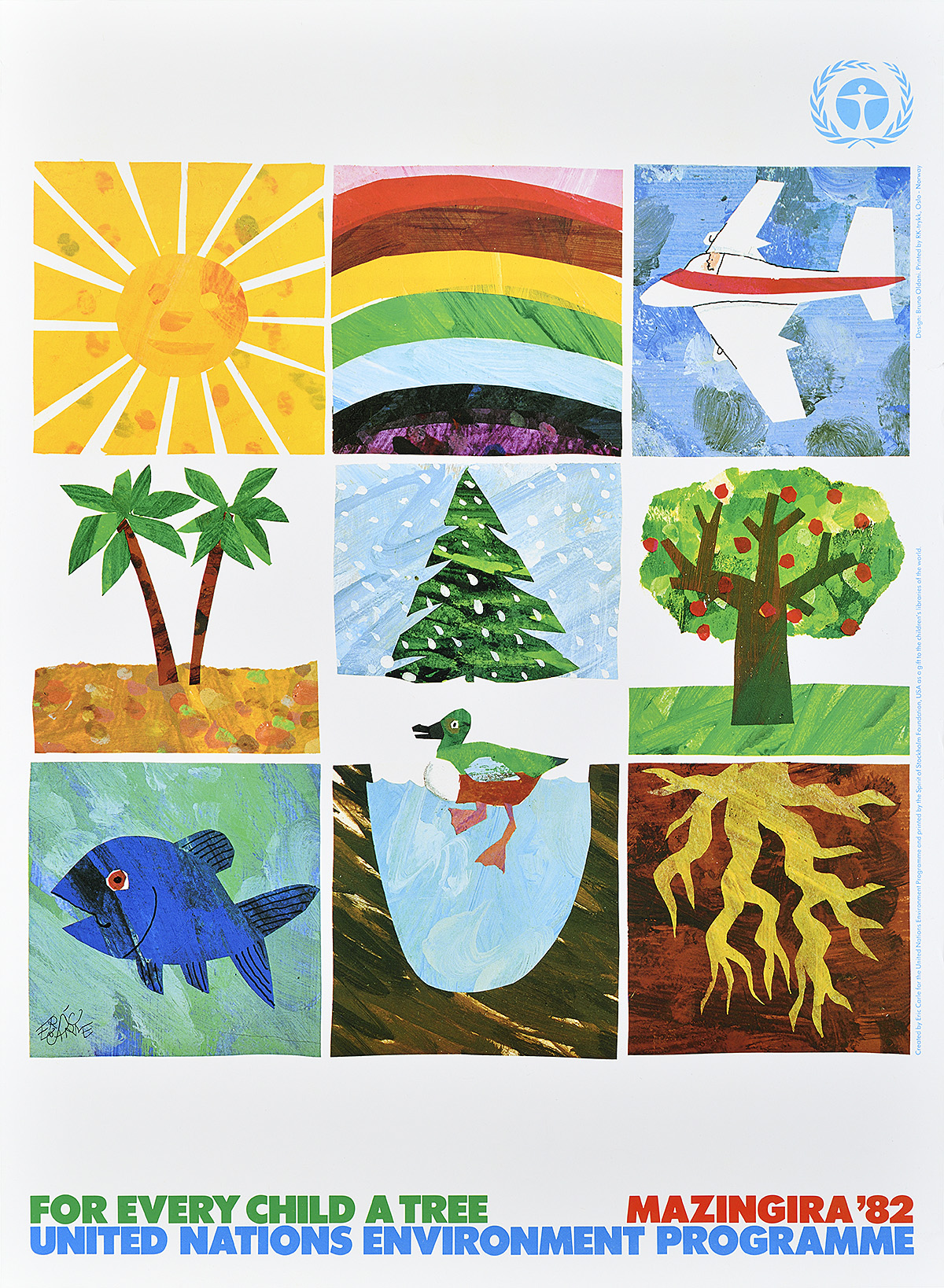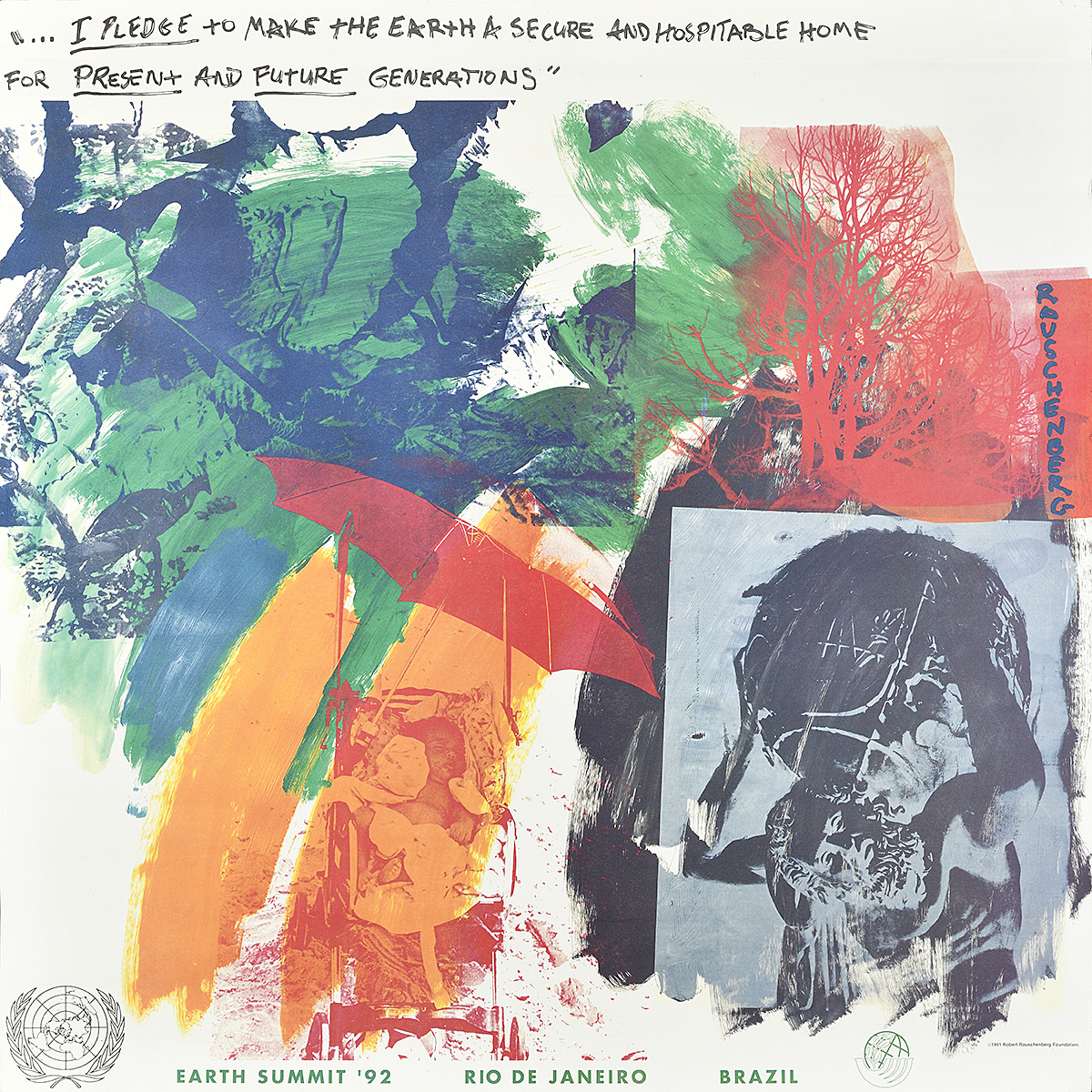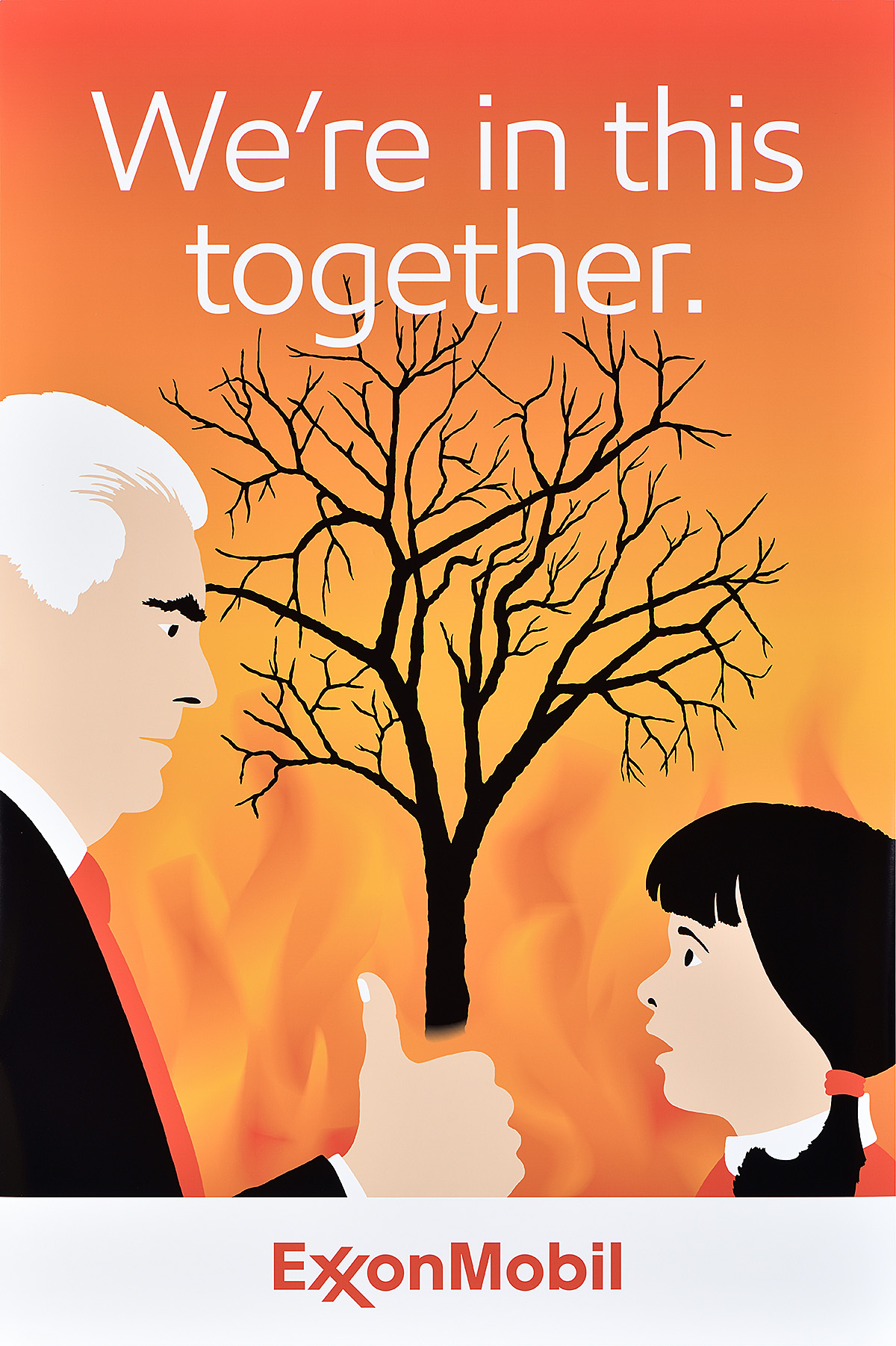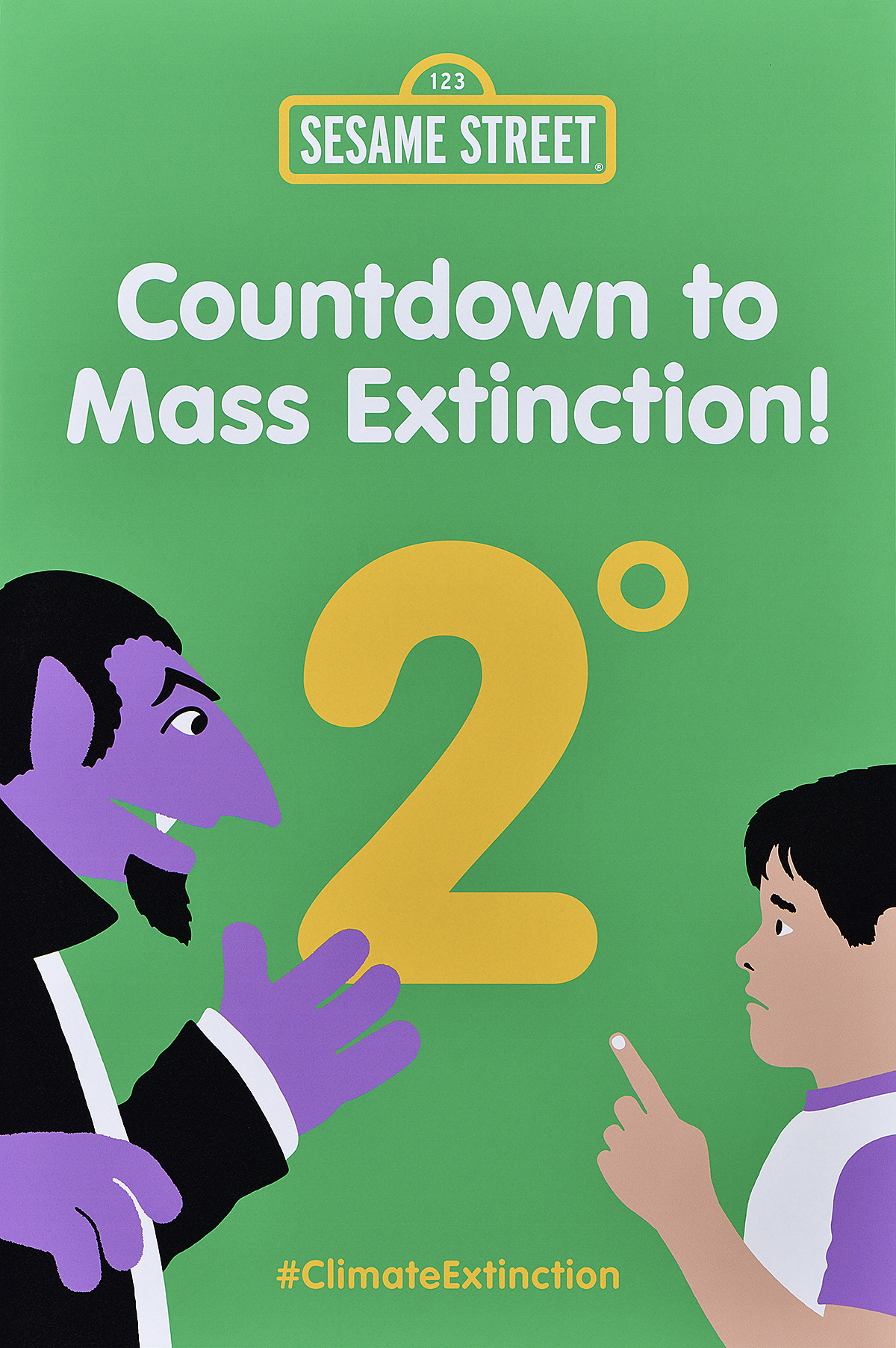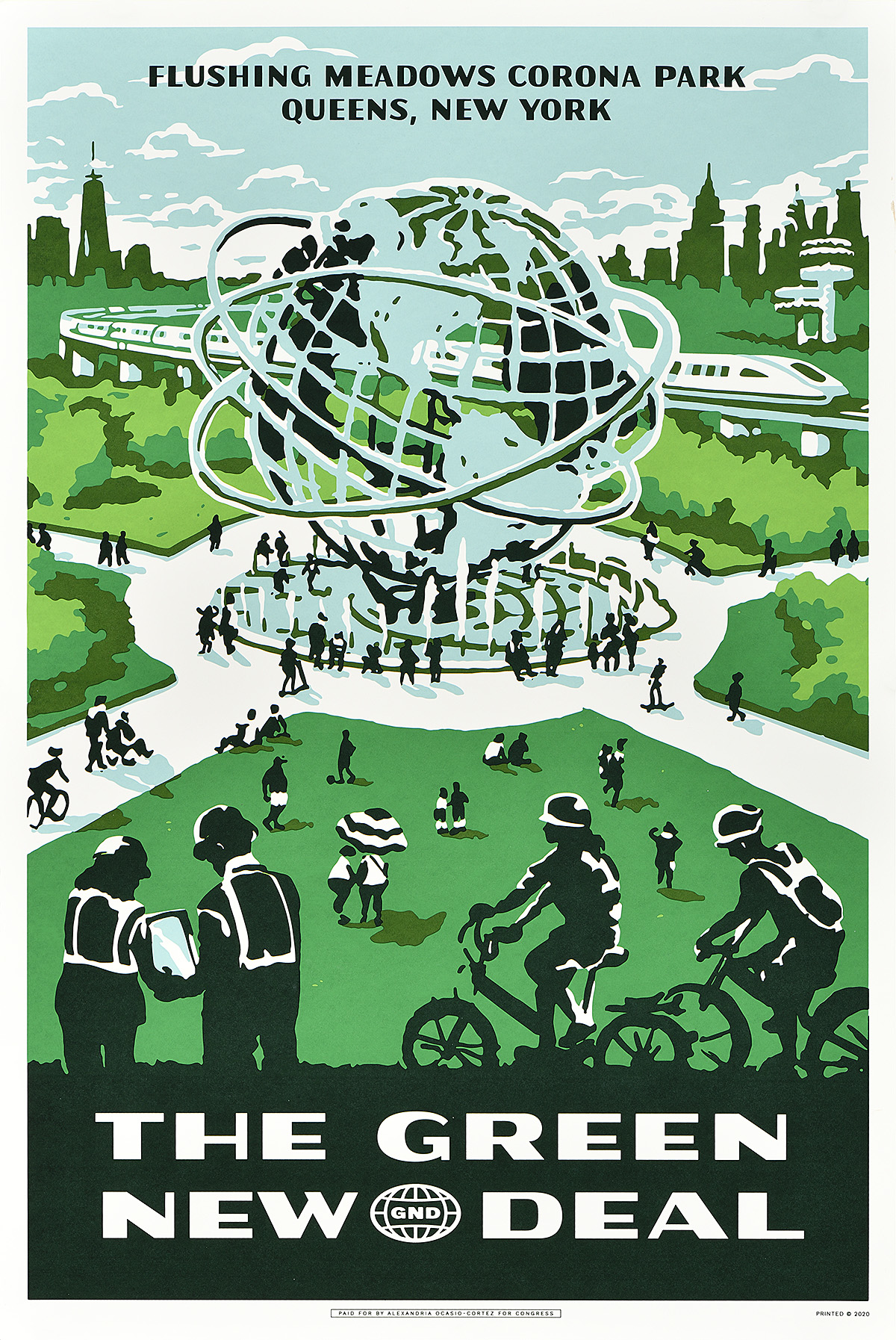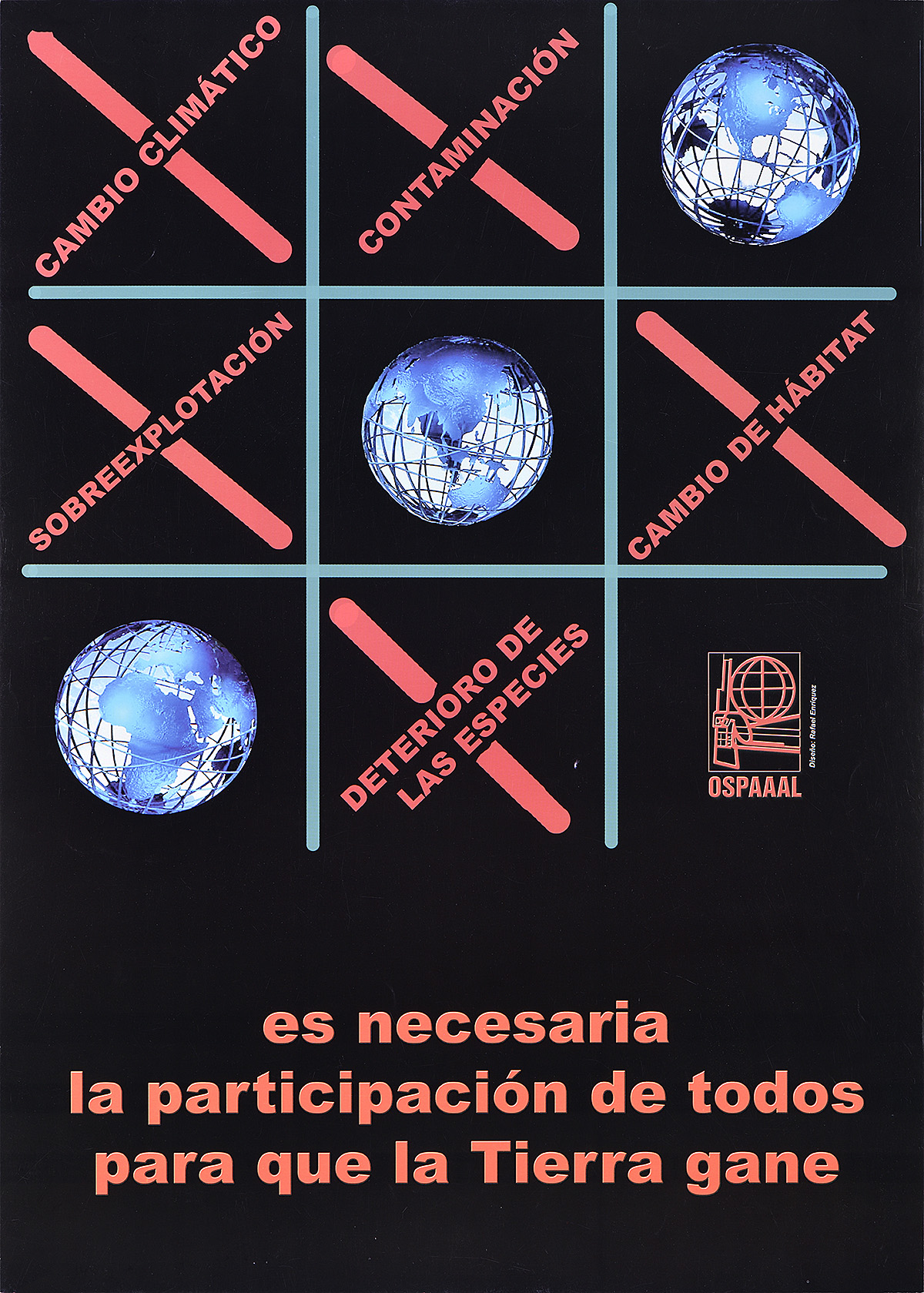We Tried to Warn You! Environmental Crisis Posters, 1970–2020
“The great question of the 1970s is: shall we surrender to our surroundings or shall we make our peace with nature and begin to make reparations for the damage we have done to our air, to our land, and to our water?”—Richard Nixon, State of the Union Address, 1970
Introduction
The posters in this exhibition were created to celebrate the natural world, to warn of the dangers facing it—and therefore humanity’s way of life—and to call people to action in a time of environmental crises and climate change. Starting in the 1970s, these types of posters became popular and prevalent in the representation of global movements for climate awareness, drawing attention to distinct issues like deforestation, acid rain, air and water pollution, renewable energy, and, ever more frequently, corporate malfeasance. Many posters were commissioned in honor of Earth Day—widely recognised as the largest secular observance in the world. Its first occurrence on April 22, 1970, was the result of bipartisan concern about pollution levels and a distrust of the ways in which government, industry, and science had coordinated their actions, ignoring long-term, detrimental issues. Earth Day inspired the establishment of both domestic U.S. legislation and regulatory bodies the same year, such as the Clean Air Act and the Environmental Protection Agency (EPA), as well as the formation of Non-Governmental Organizations (NGOs) like Greenpeace in 1971 and such international multilateral organizations as the United Nations Environment Programme (UNEP) in 1972.
Posters thrive on clear, simple messaging. While many environmental posters have drawn attention to critical issues and shaped public debate, they often incorporate visual tropes that one critic labeled “gas masks and honeybees”—resulting in a certain graphic uniformity regardless of country or issue. It is equally significant that the long-term trend of climate change, commonly referred to as “slow violence,” means that immediate disasters capture public attention more than the insidious trajectory of global environmental breakdown. While some typical symbols do appear in this show, the exhibition also showcases designs that range from the whimsical to the apocalyptic.
Although many of the areas most affected by climate change and environmental degradation are located in the poorest communities and countries, these posters have mainly been produced in some of the wealthiest places in the world. Meanwhile, peaceful environmental activists in numerous developing countries face being treated as political prisoners under the pretext of national security. As such, posters from the places most impacted by environmental catastrophe are far and few between.
The posters here are not grouped chronologically or by country, but within the four classical elements—Earth, Water, Air, and Fire. Reverence for these environmental building blocks dates back to ancient Greece, and has clear parallels in other ancient cultures, from Aztec to Zoroastrian. These elements were understood not merely as material substances, but also venerated as powerful forces that might bring meaning and illumination to daily life. The environment has been a source of respect and awe since the dawn of civilization.
This exhibition is supported by the Simons Foundation.
Wherever possible, the constructions for this exhibition have been made with Forest Stewardship Council® (FSC®) certified wood that will be saved for reuse. All glass will be donated to UrbanGlass.


